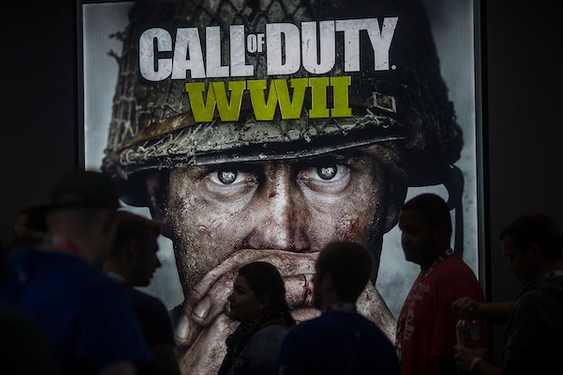A love letter to Windows users. A love letter to programmers. A love letter to technophiles and the mobile phone market. And most importantly a love letter to gamers.
And it’s long over due.
It’s been nine years since Microsoft acknowledged what it described as a “dereliction of duty” to Windows gamers. And it’s been at least as long since the company has managed to successfully do anything to fix that problem. There certainly have been plenty of promises, plenty of attempts, but no successes. Not really.
It’s easy to say the problem started in 2006 with Windows Vista, but really that was just when Microsoft decided to finally acknowledge that it hadn’t paid enough attention to computer games.
The problem started with the 2001’s release of the Xbox and the company’s almost immediate shift of attention from PC to console when it came to gaming.
By the time 2006 and then Microsoft vice president Peter Moore acknowledged the problem, it was almost too late, at least too late for a simple, singular solution.
So Vista’s promise of reinvigorating PC gaming became, for the most part, an abject failure, though at least Microsoft tried.
Windows 7 launched in 2009 with almost no mention of gaming and then a year later Microsoft made another promise, a promise to “double down” on PC games. Unfortunately, that amounted to little more than creating a new take on a Windows store for games.
Windows 8’s approach to the platform and gaming was so unliked in the development community that some major developers, including the creator of Minecraft and then Blizzard vice president Rob Pardo vocally denounced the operating system. Valve’s Gabe Newell went so far as to call it a catastrophe.
Enter Windows 10 and another Microsoft promise:
“I will tell you, for the company, if we just want to get to the company level, the success of Windows 10 is critically important to this company,” Phil Spencer, head of Xbox, said during Microsoft’s unveil of the new operating system this month. “And gaming will be a very important part of success for Windows 10.”
But what makes this operating system, this promise any different from the rest?
For one thing, Microsoft seems to have won over some of its biggest naysayers in the game development community.
While Valve didn’t respond to a request for comment, Spencer told me that Microsoft had met with the people at Valve to make sure they were onboard with Windows 10.
The company is also going to great lengths to ensure that Windows users upgrade to 10 (it’s free for anyone with Windows 7 and up). A bigger install base means more potential customers for games and less need to create versions that support old operating systems.
Windows 10 will also be installed on the console, meaning that the two systems are, in some ways, now on more even footing. Applications, at least, can be built for PC and console without having to create two versions.
And the systems will now communicate better with one another, allowing Xbox One games to play on PC and, perhaps one day, PC games to play on Xbox One.
Finally, it seems, Xbox One and Windows PC gamers will be treated equally by Microsoft, if only because the company will soon start to view them as one collective, not two disparate groups.
The key to making this work in the right way will be Microsoft laying this foundation for equal treatment properly with Windows 10, but still remembering that sometimes the two platforms shouldn’t be identical.
PC gamers might want an intricate real-time strategy game that wouldn’t function correctly on a console. Console gamers may want a big motion game not suited for PC.
While this is huge news for gaming, especially if the promises made during the unveiling of Windows 10 are kept, it’s also big news for Microsoft.
Microsoft is a big company, a big company with a history of not really knowing itself very well. It was over siloed, divisions didn’t seem to think or work together.
The unveiling of Windows 10 showed that isn’t the case anymore. Microsoft’s new CEO Satya Nadella pointed out the importance of creating seamless products after the unveiling wrapped up and noted how it could help lead to the sort of things people don’t just need, but love.
“We are building into windows the experience — from productivity to gaming, how spartan and the browser comes together, how Xbox Live comes together — to enable that seamless crossoover across devices as you move around at home and at work,” he said.
“We want to make Windows 10 the most loved release of Windows.”
———
(Good Game is an internationally syndicated weekly news and opinion column about the big stories of the week in the gaming industry and its bigger impact on things to come. Brian Crecente is a founding news editor of Polygon.)
———
©2015 Brian Crecente
Distributed by Tribune Content Agency, LLC


